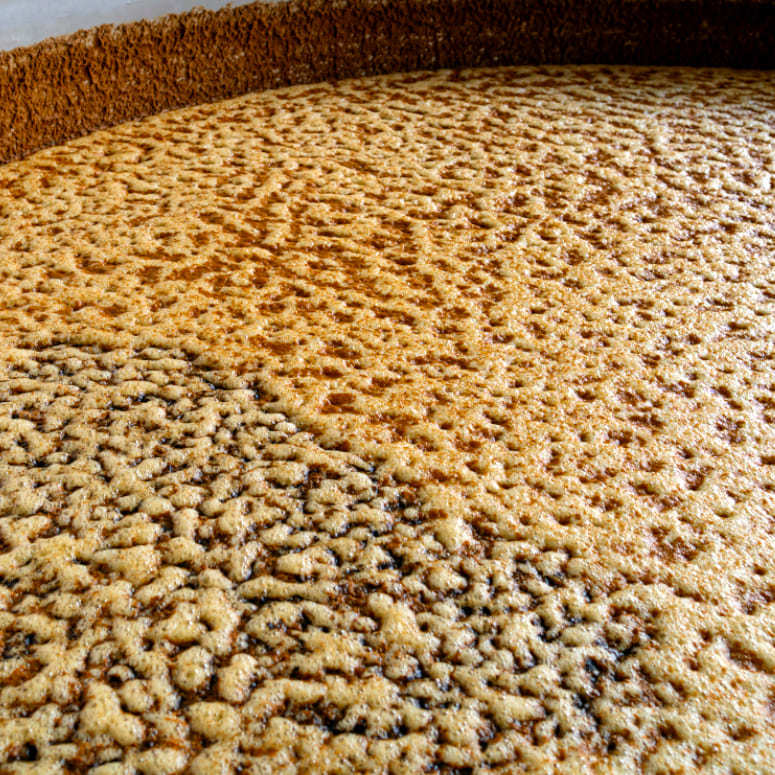

Back to Culture
Fermenting Agave juice into alcohol
Fermenting Agave juice into alcohol
During the fermentation process the sugars are transformed into alcohol within large wooden vats or stainless steel tanks.
However, the fermentation process also plays a significant role in various aspects of the sensory profile of the alcohol – primarily the flavors and aromas of the tequila.
Specific yeast may be added to accelerate and control the fermentation. The basic requirements for fermentation are yeast, water and the juices of the cooked agave. The basic liquid is called the mosto (must or wort) or tepache.
Yeast take the sugars and carbohydrates in the juice and through enzymatic processes, turn them into alcohol. Yeast reproduces asexually by budding- splitting off little daughter cells, analogous to the cloning of the blue agave itself.
Traditionally, the yeast that grows naturally on the agave leaves is used; however, today many distilleries use a cultivated form of wild yeast. Normal fermentation has two stages. The first is aerobic, where oxygen is present.
This initial process is very rapid process, and the yeast doubles its colony size every four hours. This part normally lasts 24-48 hours. The second part is anaerobic (no oxygen present).
This is a slower activity during which the yeast focuses on converting sugar to alcohol rather that increasing the number of yeast cells.
Fermentation typically takes seven to twelve days, depending on the method used.
News
Agavales
on Social







